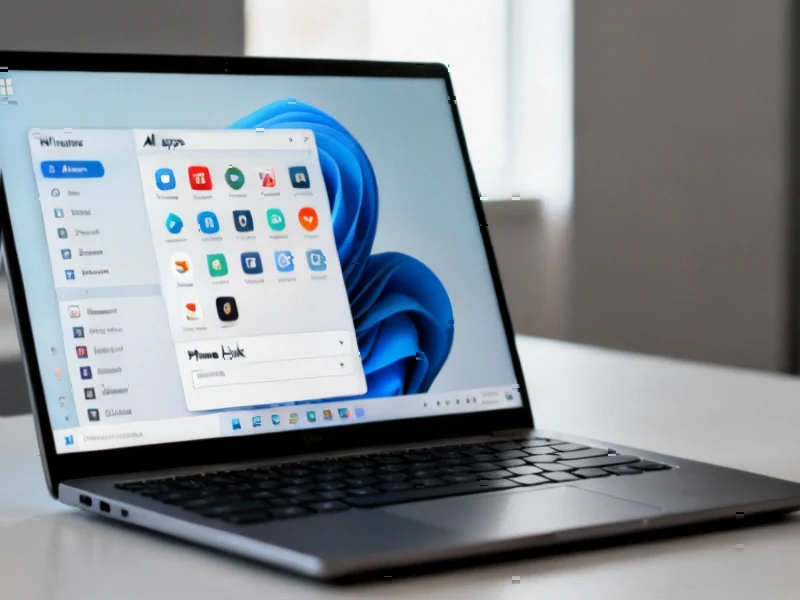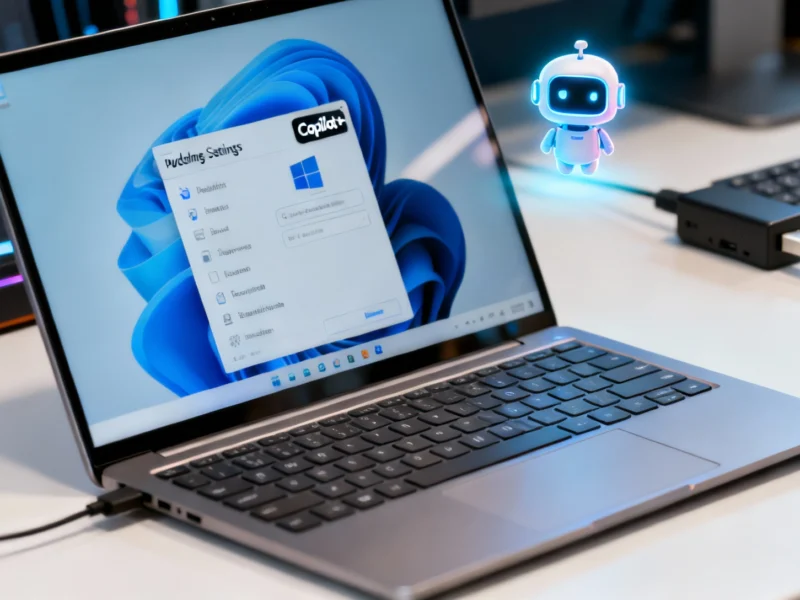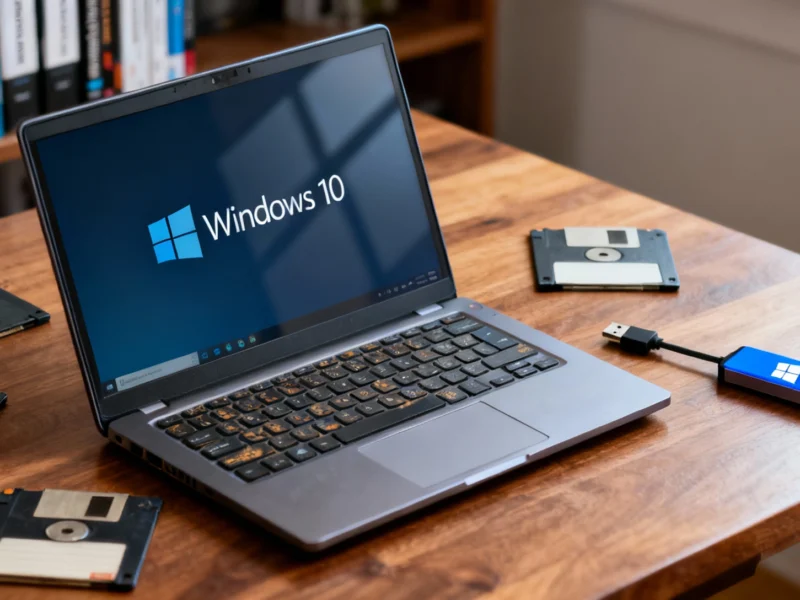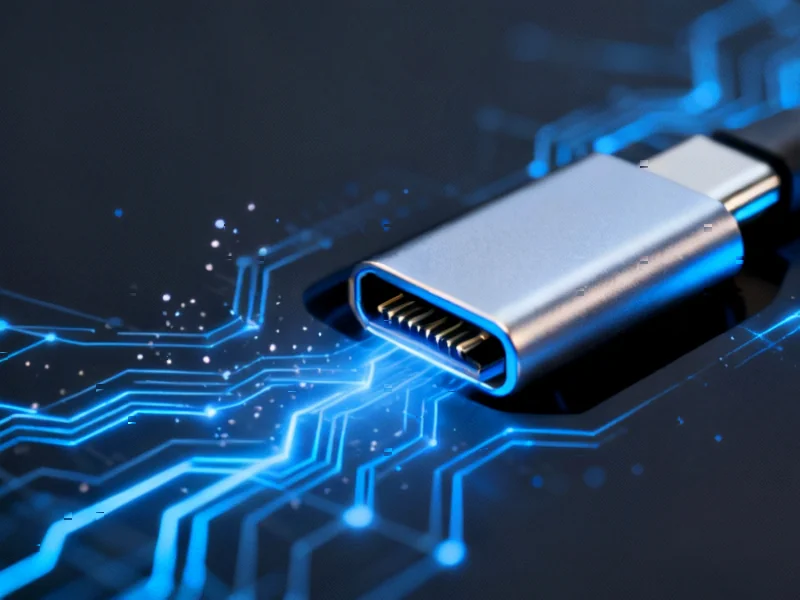According to Digital Trends, Microsoft has begun rolling out a major Windows 11 Start menu overhaul through the optional October 2025 non-security preview (KB5067036) for versions 24H2 and 25H2. The redesign prioritizes flexibility and screen-size adaptation, featuring new layout views including grid and category options for the elevated “All apps” list. Users can now hide Pinned apps, Recommended files, or both sections entirely for a cleaner experience, while the menu adapts to larger screens by displaying more pinned apps. The update also integrates an upgraded Phone Link panel directly within the Start menu and includes taskbar enhancements like animated app thumbnails and a battery percentage icon. This represents Microsoft’s most significant interface evolution since Windows 11’s initial release.
Table of Contents
Microsoft’s Interface Philosophy Evolution
This update represents a fundamental shift in Microsoft’s approach to the Start menu design philosophy. Since the controversial removal of the classic Start menu in Windows 8, Microsoft has struggled to balance modern design principles with user workflow preferences. The company initially swung toward minimalism with Windows 11’s centered Start menu, but user feedback has clearly pushed them toward restoring functionality without sacrificing aesthetics. What’s particularly notable is Microsoft’s acknowledgment that different users have radically different workflow needs – from power users who want quick access to everything, to minimalist users who prefer a clean, distraction-free launch experience. This flexibility represents a maturation of Microsoft’s design thinking, moving away from the “one interface fits all” approach that has characterized recent Windows versions.
The Technical Architecture Behind the Changes
Beneath the surface, this redesign likely leverages significant backend improvements to Windows Shell components and the XAML framework that powers modern Windows interfaces. The adaptive layout for different screen sizes suggests Microsoft has implemented more sophisticated responsive design principles, potentially using container queries or similar technologies that allow interface elements to reorganize based on available space rather than fixed breakpoints. The animated app thumbnails and enhanced Phone Link integration also indicate performance optimizations in how Windows manages real-time data streaming between different system components. These technical improvements, while invisible to most users, are crucial for maintaining system responsiveness while adding these new features, especially on lower-end hardware where Windows 11 has historically struggled with interface lag.
Windows in the Cross-Platform Era
The deeper Phone Link integration within the Start menu reflects Microsoft’s strategic positioning in an increasingly cross-platform computing environment. While Apple has pursued tight integration through its ecosystem lock-in strategy, and Google has focused on web-based solutions, Microsoft is carving out a unique position by bridging Windows with competing mobile platforms. This approach acknowledges the reality that many Windows users carry iPhones or Android devices rather than Microsoft’s own (discontinued) mobile hardware. By making phone integration a core part of the Windows experience rather than a separate application, Microsoft is attempting to maintain Windows’ relevance in a world where mobile devices increasingly serve as primary computing devices for many users. This strategy could help Windows maintain its enterprise dominance while becoming more appealing to consumers who prioritize seamless device switching.
Potential Implementation Challenges and Risks
Despite the promising features, this major interface overhaul carries significant implementation risks that could affect user adoption. Historically, Microsoft has struggled with consistency when rolling out major Start menu changes, with features sometimes behaving differently across various hardware configurations and display setups. The optional preview approach suggests Microsoft is being cautious, likely because interface changes provoke strong user reactions – remember the backlash against Windows 8’s Start screen. There’s also the risk of feature fragmentation, where different users have substantially different Start menu experiences depending on their update settings and hardware capabilities. Additionally, the enhanced Phone Link integration raises privacy considerations about how much mobile data is being surfaced directly in the Start menu, potentially requiring clearer user controls and transparency about data handling.
What This Means for Windows’ Future Direction
This Start menu redesign provides important clues about Microsoft’s future direction for Windows. The emphasis on adaptability and user choice suggests Microsoft is moving toward a more modular, customizable operating system that can better serve diverse user needs. We’re likely seeing the foundation for future AI-powered interface adaptations, where Windows could learn user preferences and automatically optimize the Start menu layout. The improved cross-device integration also hints at Microsoft’s broader ambition to position Windows as the hub for a user’s entire digital life, regardless of what devices they use. As computing becomes increasingly distributed across multiple form factors, Microsoft appears to be preparing Windows to serve as the central orchestrator rather than just a standalone platform, which could prove crucial for maintaining Windows’ relevance in the coming decade.



